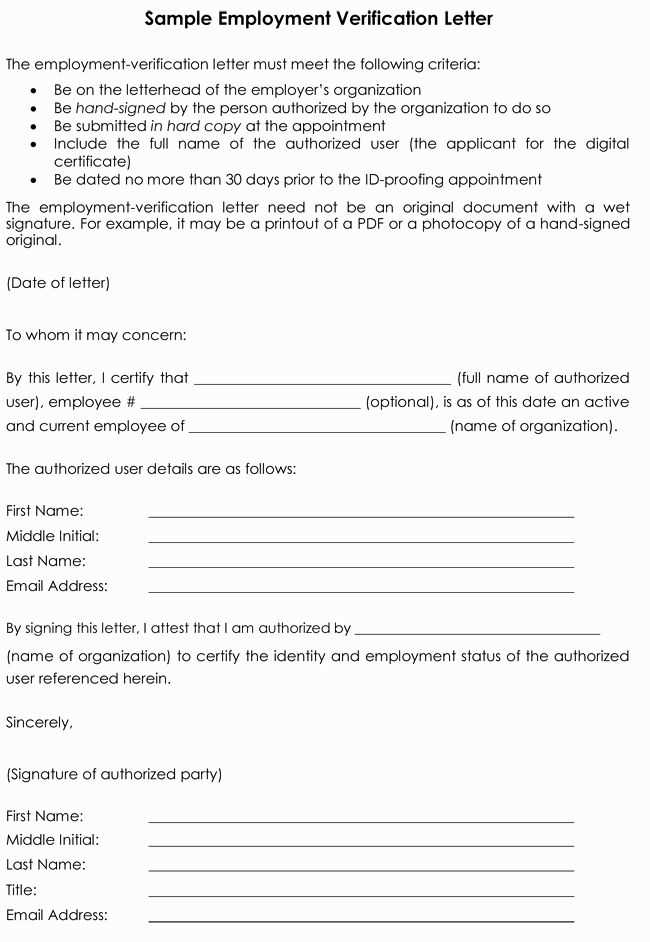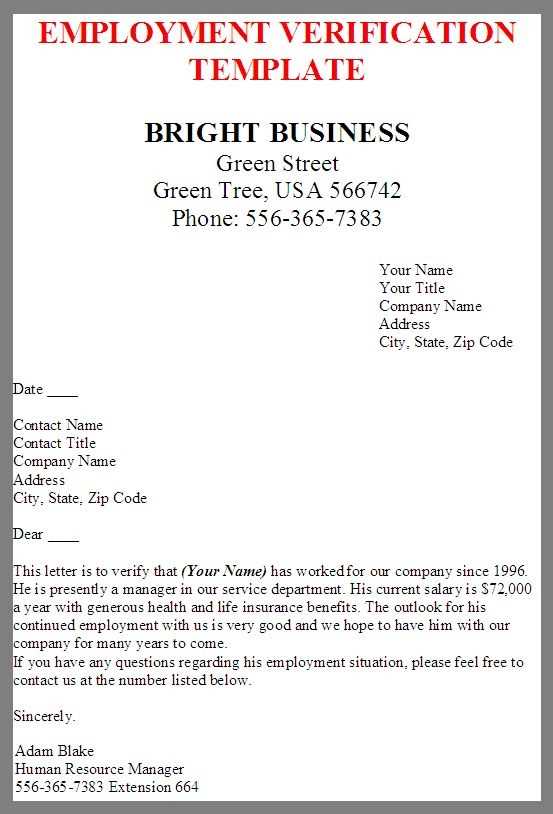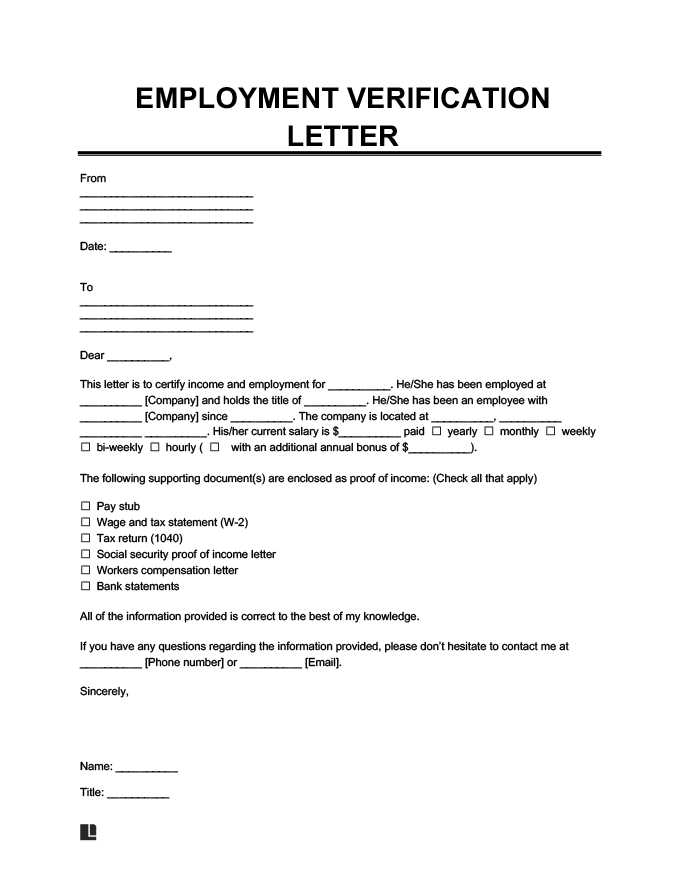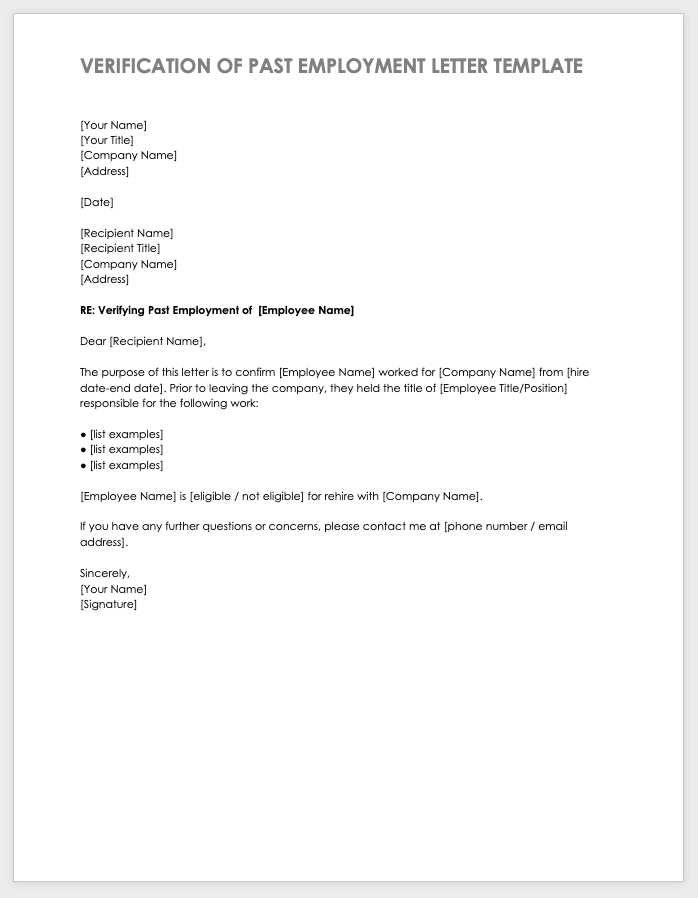Notarized Employment Verification Letter Template

When verifying an individual’s professional history or current position, certain documents are required to validate their work status. These official confirmations are important for various purposes, including loan applications, background checks, or visa processes. This guide outlines the key components of such a document and how to properly draft one for official use.
Why You Need an Official Work Confirmation

Official statements regarding a person’s job details are crucial for both the employee and the requesting entity. They provide transparency and assurance, confirming critical information such as employment duration, position, and salary. In many cases, these confirmations are legally binding and require formal validation from a licensed professional.
Essential Elements in the Document

- Full Name of the Employee: Include the individual’s legal name as listed in employment records.
- Job Title and Responsibilities: Specify the individual’s position along with a brief description of their job duties.
- Employment Duration: Clearly state the start date and, if applicable, the end date of employment.
- Compensation Information: Mention the salary or hourly wage, if required.
- Employer’s Details: Include the company name, address, and contact information for verification purposes.
Steps to Write an Official Work Confirmation

- Gather All Relevant Information: Ensure you have accurate details about the employee’s work history and position.
- Write the Document: Begin with a clear statement of employment, followed by the essential details mentioned above.
- Have the Document Certified: After drafting, the document should be signed by an authorized individual and stamped or sealed by an official.
Common Errors to Avoid
When preparing an official confirmation, it is important to avoid vague statements or incomplete information. Ensure the dates and facts align with company records, as discrepancies can cause delays or rejections of the document.
Where to Have It Officially Validated
The document should be signed and authenticated by someone authorized to certify its contents. Typically, this includes human resources representatives or notaries who hold official credentials. Confirm the method of validation with the requesting party to ensure it meets their standards.
What is an Official Work Confirmation Document
Why You Need an Official Job Statement
Steps to Create a Work Confirmation Document
Key Components of an Official Statement
Common Mistakes to Avoid in Writing
Where to Have Your Document Certified
When confirming someone’s professional background, it’s important to draft a formal statement that outlines their role, duration, and salary. Such documents are often required by various institutions for verification purposes, such as applying for loans, visas, or background checks. This section explains the process and highlights the necessary details to ensure the document meets official standards.
Why You Need an Official Job Statement
An official job confirmation serves as proof of employment, which can be crucial in many situations, including financial transactions or legal matters. Whether you are an employee or an employer, having an authenticated statement ensures accuracy and credibility, allowing institutions or other parties to trust the provided details.
Steps to Create a Work Confirmation Document
To create an official document, begin by collecting all necessary details, such as the person’s full name, job title, and dates of employment. Once the information is gathered, write a clear and concise statement that includes all required facts. After drafting the document, it must be signed by an authorized individual and certified by an official entity to make it valid.
Key Components of an Official Statement
- Employee Information: Full name, job title, and dates of employment.
- Employer’s Information: Company name, address, and contact details.
- Salary or Compensation: If needed, include salary or hourly wage information.
- Job Duties: A brief description of the employee’s responsibilities.
Common Mistakes to Avoid in Writing
When drafting a formal statement, ensure that all details are accurate and complete. Missing or incorrect information could lead to confusion or rejection of the document. Double-check dates, job titles, and compensation details to avoid discrepancies.
Where to Have Your Document Certified
Once the document is prepared, it must be validated by an authorized professional. Typically, this includes individuals such as human resources representatives or public notaries who have the legal capacity to certify the authenticity of the statement.